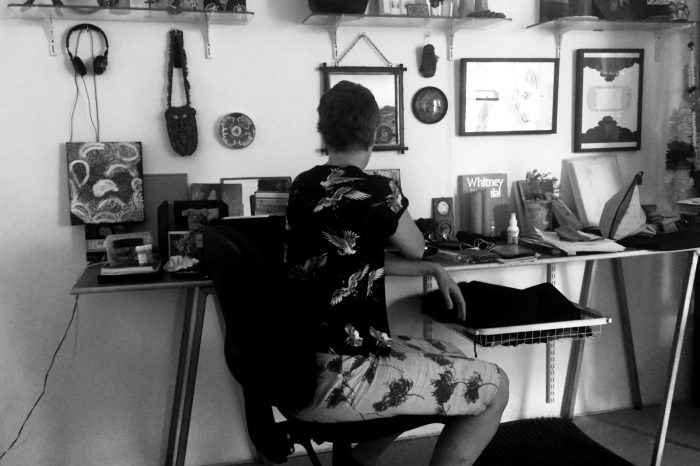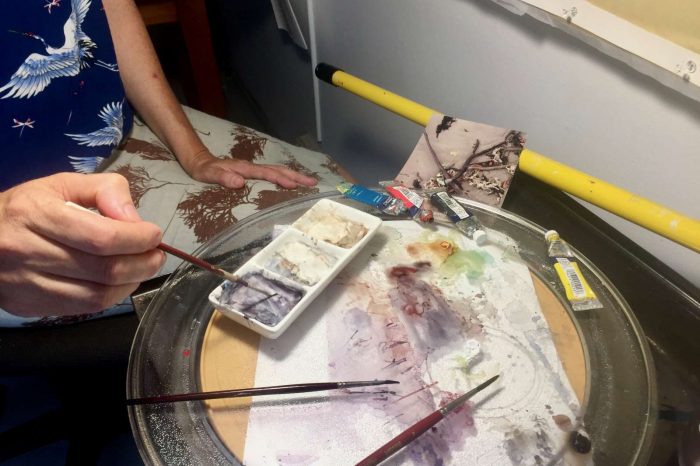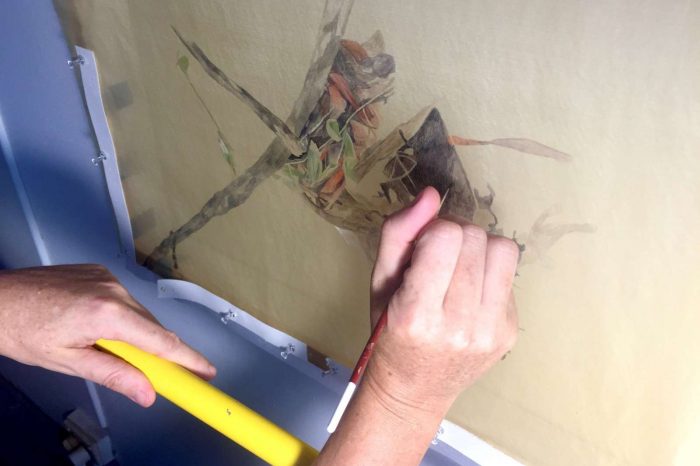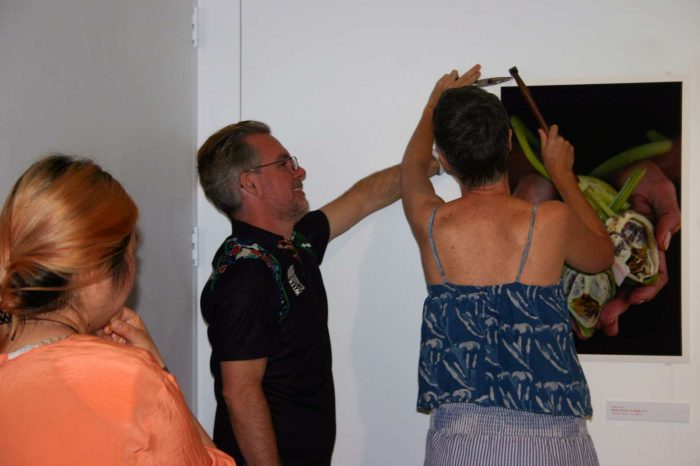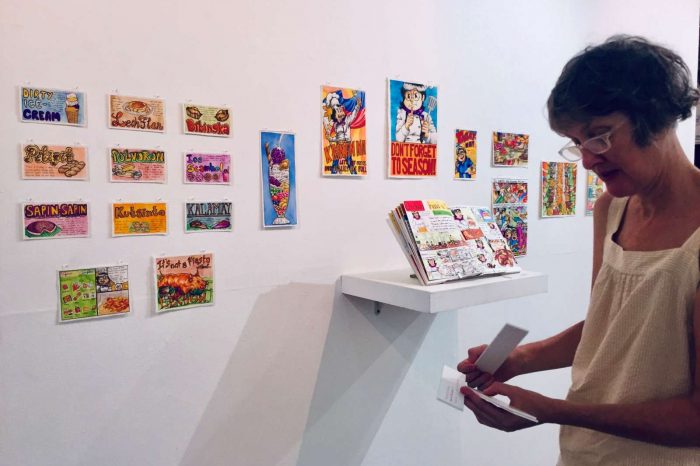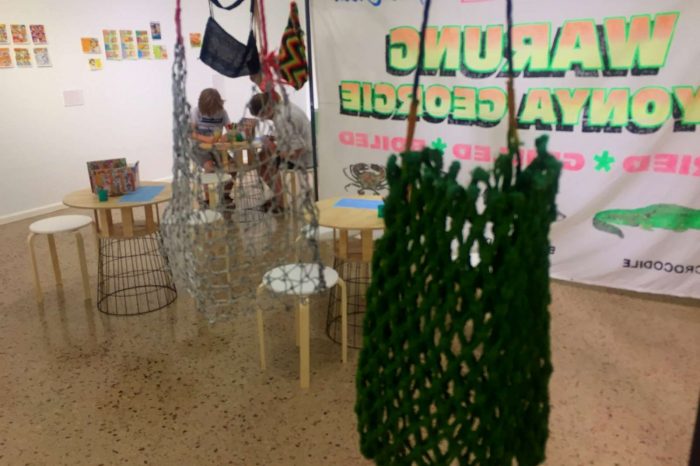Celebrating food as a form of social sculpture with Sarah Pirrie
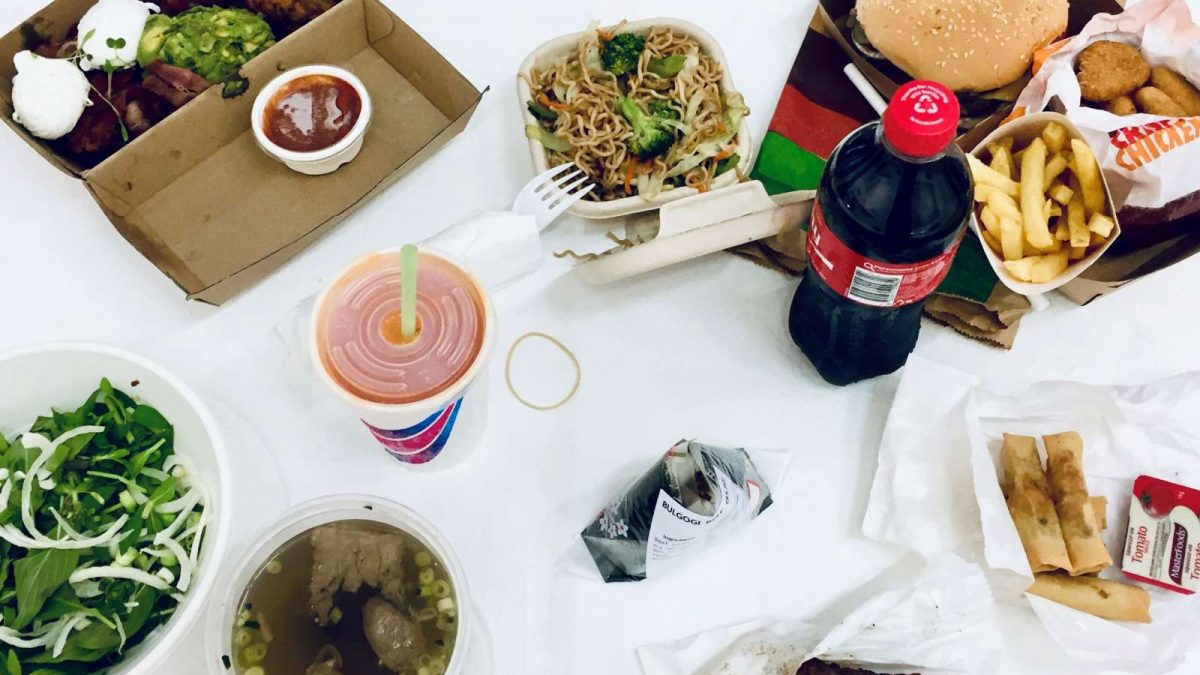
Whilst taking a break from teaching earlier this year to pursue her next major piece of work that will contribute to a PhD, I caught up with SPARK NT Curator Sarah Pirrie in her studio. I can see how this space, which is also her home, is not only an incubator for ideas and discussion but is the epicentre for the work she produces.
Your career so far spans more than 25 years and has encompassed advocating for the arts, especially within the Northern Territory, working as an educator in the tertiary sector and maintaining a successful artistic practice that also incorporates installations and public interventions. In 2017, you opened a private gallery, Pirrie Space, where local artists are provided a platform to test new ideas for interdisciplinary conversation and experimentation. I’m interested to hear what led you to apply for the SPARK NT curator program?
Sarah: SPARK NT is a unique program; we do not have anything quite like it here in the Northern Territory. I have in the past tried to apply for funds to tour an exhibition, and so I was keenly interested in getting some first-hand experience with this process.
The SPARK NT curator program also fulfills a personal ambition of mine to elevate local artists and the Northern Territory as a creative meeting place. In my exhibition, We Eat We Are, I included a comprehensive demographic of the artists selected, both in the type of engagement they have had in living in the Territory, particularly the subtropical Top End, and in the creative exchange that happens here. From Indigenous Elders through to international students, this is a unique demographic of creatives that bring a personal and often culturally specific perspective to food. My hope was for ‘We Eat We Are’ to reflect the diversity of the Northern Territory through food exchanges that have been occurring regionally and with each other long before colonisation.
The SPARK NT program looks at addressing an identified gap for curatorial pathways within the Territory. What learnings have you taken from the program that you can pass onto your students?
Sarah: This has been a “living curriculum” for me and has allowed me to continue the trajectory of learning through the various mentoring phases and exchange components. I have particularly enjoyed the mentoring process and feel there is much I can pass onto students from this experience.
Can you see any tangible benefits of the program on your career?
Sarah: Building relationships through the creative exchange processes of building an exhibition has led me to establish strong networks. It has given me the confidence to apply again for future touring exhibitions and a comprehensive guide as to how this might be done. Working on a touring exhibition and working with the various venues to meet their deadlines and exhibition requirements has been critical. Meeting the requirements of touring especially exhibition design, artwork condition reports and management, venue communications package, travel logistics and public programs required a lot of time management.
The SPARK NT curator program is very intensive, what were the biggest challenges for you in the delivery of your exhibition ‘We Eat We Are’?
Sarah: Universal concerns for any project are budgets and time. There are always shortfalls and managing these were and are critical to the success of any project.
I loved your “big idea” that encapsulates the exhibition – ‘We Eat We Are’ celebrates food as a form of social sculpture that unites, nourishes and renews. What led you to conceive this idea?
‘We Eat We Are’ really came from the artists. It was the zeitgeist of the moment with key 2018 exhibitions such as ‘Midawarr | Harvest’ by Yolŋu elder Mulkuṉ Wirrpanda and landscape painter John Wolseley, and Siying Zhou’s ‘To Master Your Mother Tongue’. Christine Barzaga’s Filipino cookbook and Emma Lupin’s ‘GULP’ food exchange and her documentation of regionally appropriate plants and their subsequent dishes and recipes were also a great influence.
Although you have been in Darwin for many years, were there any synergies with the food you experienced growing up in Melbourne? The city is known for its multi-cultural cuisine such as the vibrant Vietnamese food on Victoria Street.
Of course, coming from Melbourne which is a Food City means that I love food, but I also come from a family of Produce Merchants. So, my father ran a business, the Pirrie Brothers, with my Uncle Andy and it was their father’s business. I grew up with bags of potatoes and onions in the back of the car and visiting restaurants and hospitals to deliver food as we headed down to our weekend farm at Balnarring. My father’s Hobby Farm features heavily in my childhood memories with my parents and neighbours enjoying shared crops, experimenting with dairy, smoking meats and generally centering life around growing food, making meals and family events.
In terms of food, what I love most is the social sculpturing of it. We grow closer and understand each other better through food. My creative friendship with Siying Zhou has centred around her celebration of Chinese New Year with the making of dumplings. During her public program for the exhibition ‘To Master Your Mother Tongue’ Siying invited participants to an associated cooking class. As part of the recipe exchange, we were to bring a sauce to go with the dumplings. I brought along my sister and my mum’s plum sauce; something that’s famous in our family, and that made a really wonderful contribution to that night.
You were also interested in the personal and collective food journeys and the binding of ingredients. This is really exemplified through the work of the Tiwi artists, Emma Lupin and Mulkuṉ Wirrpanda. Mulkuṉ holds a wealth of knowledge that has been passed down through countless generations. Tell me what inspired you to showcase this particular work ‘Matarawatj II’ in the exhibition?
In ‘Matarawatj II’ Mulkun has provided us with an ecological map of her Country. Here the emphasis is on Country, as it is, lived, danced and walked on. A place of memory, a place to find food, to hunt, collect, share, and eat; a knowledge that Mulkun has generously shared through multiple artworks and collaborations. The MDF [compressed fibreboard] which Mulkun has painted on is an unusual found material and the scale is much larger than the plant portraits I could have used for the exhibition. In actual fact it is the materiality of this work that I was attracted to. To quote Donna Haraway “it matters what stories we tell, to tell other stories with”. In using this found material Mulkun has evoked her Country. The material was once a stage on which Bangarra Dance Theatre performed at Yirrkala. This dance was developed through knowledge exchanges. This artwork, therefore, contains multiple memories and experiences of knowledge shared about being on Country.
Spending some time on the Tiwi Islands producing the installation and soundscape was an amazing experience for you. This work really resonates and draws me into its essence of community, family, sharing memories and learning about culture. Could you share this moment with us?
I visited Tiwi to spend the day hunting for Jukwarringa [mud mussels] on the local beach at Timrambu. The harvested Jukwarringa were for painting on later. Other shellfish were collected and the wonderful sea air was filled with chatter, laughter and children playing. I did sound recordings and took photos of Kaye, Raelene, Janice and Michelle as we hunted and later cooked and feasted. Just perfect! Later when the fully decorated shells were delivered to my door and I unwrapped and recorded each one, I held them in my hand and could remember what we were doing, sometimes what we were saying; it’s a very visceral connection as they are artwork, meal and memory in one.
I had a lot of fun working on ‘We Eat We Are’ with you and the Visual Arts team at Artback NT. We have been able to push the boundaries with what audiences can expect from an exhibition. By combining intellect with the visual and “playing” with word metaphors throughout the overall design. What were some of your other memorable moments working on the development of ‘We Eat We Are’?
During the development phase of the exhibition, I asked several artists to make new works. I was able to engage in this process in a number of ways. For Christine [Barzaga] and Vi [Bao Vi Truong] I enlisted the help and mentorship of Siying [Zhou], and we came together, via zoom, throughout their creative process. This was wonderful as many stories and ideas were intercepted and engaged with. Lots of recipe exchange!
Working with Jo Foster the Visual Arts Manager from Artback NT was one of the greatest pleasures of this project. Her focus, enthusiasm and creativity were infectious. I knew of Jo through friends and by reputation, but we had never properly met. Working on ‘We Eat We Are’ with Jo allowed the development of the exhibition to be challenged and creatively expanded in meaningful ways. She was always ready with solutions when problems were at hand and quick to step in and defend or take up the reigns when I needed support, guidance and an extra hand.
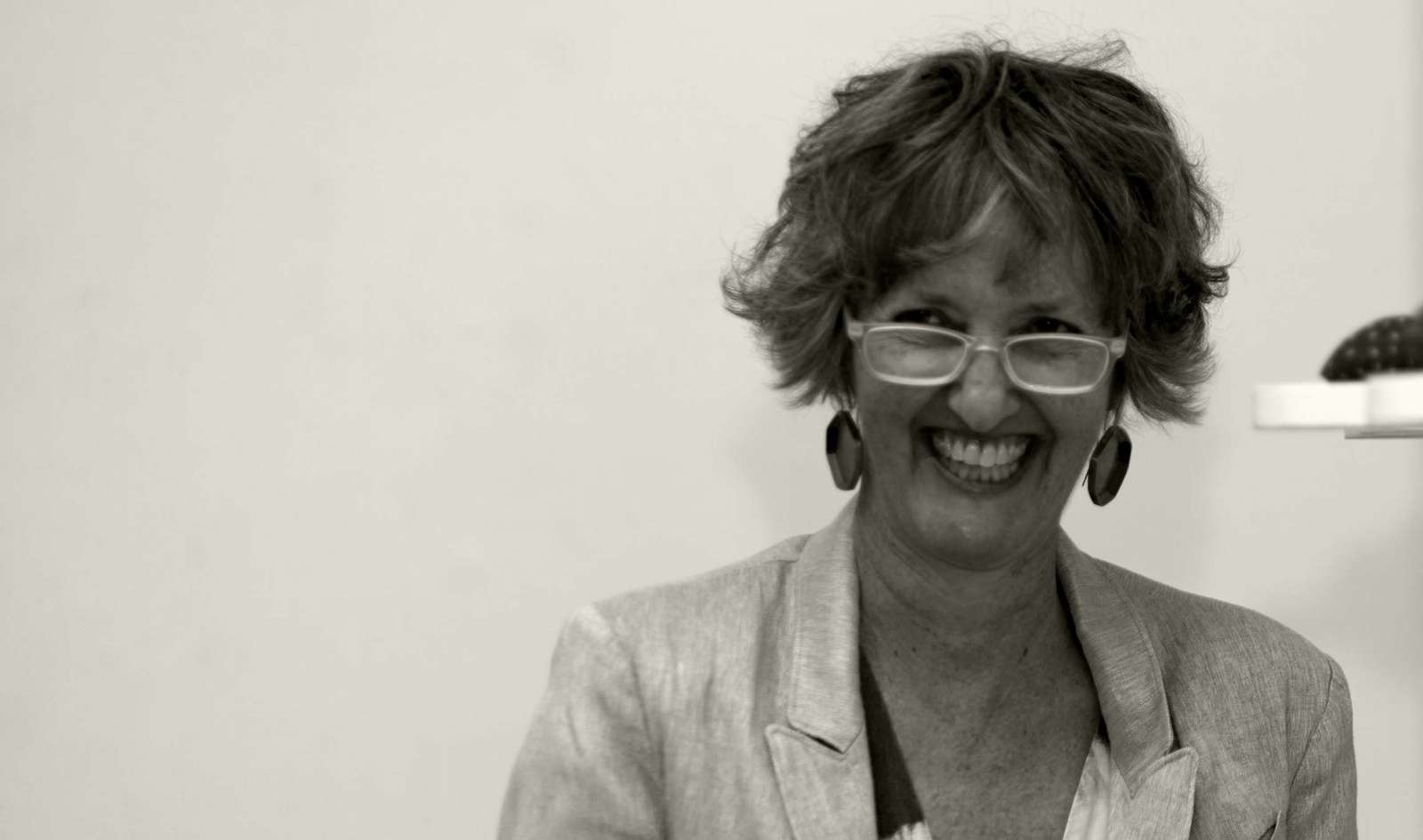
Moving Image 1
Siying Zhou, ‘Suk My Exotic Fingers’, 2018, bronze castings, wood panelling, found drawer, rhinestones, turntables.
Video: Installation of ‘Suk My Exotic Fingers’ in the exhibition ‘We Eat We Are’, Godinymayin Yijard Rivers Arts & Culture Centre, Katherine, 2019. Videographer: Rebecca Renshaw
Moving Image 2
Soundtrack: Tiwi artists Kaye Brown, Raelene Lampuwatu Kerinauia, Janice Pungautiji Murray and Michelle Woody live and work on Melville Island. Time spent immersed in the coastal environments of their island home more often than not includes a foraged feast shared with family and community.
Video: Installation of Jukwarringa (mud mussels), Piranga (long bum), Mirnangini (cockles) and Mirninguwuni or Piliwuni (oyster) with soundtrack in the exhibition ‘We Eat We Are’, Godinymayin Yijard Rivers Arts & Culture Centre, Katherine, 2019. Videographer: Rebecca Renshaw
